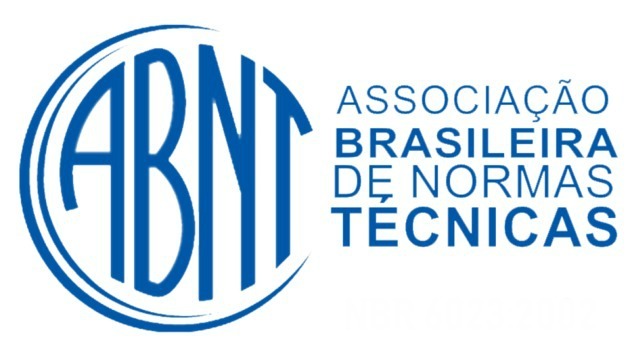Monograph is a dissertation work that is dedicated to a specific study. It is required in most universities as a course completion work, better known by the dreaded name “TCC”.
It is a thesis, which makes it more complex than other work you do during your university course, especially given its scientific nature.
It is so developed that its elaboration can take a year and is considered a course subject. The monograph involves a lot of research, which is precisely what gives more credibility to the work, in addition to meetings with the advisor.
It must be done in accordance with the rules of the ABNT - Brazilian Association of Technical Standards.
After the written work, it can be presented to an examining board.
How to do it: step by step
1. choose the theme

You are the one who chooses the topic, so you must take into account your areas of interest to meet its relevance.
As you'll be spending a good part of the year writing your monograph, it's not worth choosing something you don't feel very comfortable with. The result is better if you enjoy doing it.
After choosing the topic you will need to delimit the subject. One of the reasons is that a topic can be very, very broad and you don't finish writing.
The other reason is that the choice of topic must express a problem. This means that you have to present a situation (which is the problem), show what is said about it and draw your conclusions.
It is very important to research if there is material that will help you to develop your work and if there are good sources that can be used to give more credibility to your monograph.
At this point, it is worth thinking about making a balance between the topic and the advisor who is most focused on it. The relationship with the advisor should also be taken into account for the simple fact that it is more pleasant to work with someone with whom we have some affinity.
2. plan your time

Before starting work you need to know how much time you can count on. In addition to avoiding unnecessary stress, you organize yourself to the point of having a sense of the time you can spend in each phase of the project: research, drafting the text and formatting the work, not counting the meetings with the teacher advisor.
Ask the advisor for help and schedule your meetings with him, remembering that he probably has other projects under his supervision and will not always be available to you.
And most importantly: planned, do it!
3. assemble the structure

Put down on paper the points that will be covered in your work.
Create a kind of index, with titles and subtitles, considering the basic structure: introduction, development and conclusion. This will help you guide your thinking and the path that makes the most sense.
Of course, in the end you will have something very different, after all as you develop your research you will discover things new and feeling the need to talk about something they didn't think about talking (never forgetting the delimitation of the theme, clear!). The job index is only ready at the end, this is just a kind of compass.
4. Understand the rules before starting

It's important to know how to go about things in order to follow the rules from the start. In the case of quotes, for example, doing everything and only at the end to meet the requirements can be a lot of work, in addition to the risk you run of missing something.
As you make quotes also make the bibliographic references. This will save you precious time.
You can leave the rules regarding the presentation of the work (which must be on the cover and in the summary, for example) until the end, when you will finally say: The thesis is ready! Let's get to the details.
Plagiarism: no way!
Even if it is not your intention to copy anyone's text, it is important to remember that the quotes (which give more credibility to yours) work) can be considered plagiarism if you do not do them correctly, that is, without identifying that the idea you mentioned It's not yours.
There are three types of citations:
- direct quote, which transcribes the author's words;
- indirect citation, which is based on a work;
- citation citation, which mentions a quote that was made by an author.
know more:
- Direct and indirect citation
- Apud or citation citation
- Website quote: how to do it?
5. Get organized and get inspired

During the search, point out everything that you find interesting and that could be used. If you found something that you think could still be used, write it down. Don't trust your memory.
Use the technique of record. It will make all the difference.
Organize your workplace too. Try to stay in a quiet place where there is space to keep your stuff. It will be great if you have a place reserved for this, where you have everything ready without having to tidy up every time you go to do a little more of your monograph.
That's it! Sit down, focus and enjoy your project!
Structure of the monograph
NBR 14724 is the ABNT standard that specifies the requirements for academic works, considering the elements pre-textual (which precede the work itself), textual (the work itself) and post-textual (those that are complements to the work).

textual elements
Introduction
Here you present the problem and its relevance. In the introduction you tell people what people will find in your work.
Development
Here you develop the ideas that were just mentioned in the introduction. You must use references that give more credibility to your work and that above all prove the relevance of the topic.
Conclusion
At the end of the monograph, you should resume the presentation of the problem and revisit the aspects mentioned throughout the development of your text.
You must summarize what was covered in your work and present the conclusion of your study.
Read too:
- Tips for you to rock the completion of TCC
- Pre-textual elements in academic papers
- How to make a conclusion?
- Scientific popularization text
- Bibliography: what it is and how to do it
- How to reference sites: ABNT models and examples
- ABNT cover sheet
- How to make a summary (ABNT rules)

